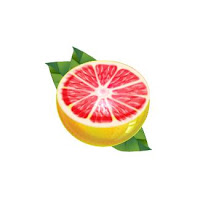This
is the second part of a three part blog on superfoods that you might
not think are so super. If you're here for the first time, and missed
part one, have a look here.
Below are a few more foods that you might see regularly in the shop
that you never knew were so super!
5. Avocado
 |
| Superfood? |
A
quick glance at an avocado on a nutrition website will tell you that
a half (100g) contains 15g of fat, but you need to read in to this.
The fat is only 2g of saturated fat, and it contains 1.6g of omega-6
fatty acids, which are great for you, so the high fat level isn't all
bad. Certainly with a high amount of monounsaturated fat, its good
essential fat that you're getting. The half avocado contains 9g of
carbohydrates, but 7g of that is fibre, so you get excellent
digestive transit. As for vitamins and minerals, the avocado is a big
hitter. They have good levels of magnesium and phosphorus, and
excellent (14% RDA in ½ an avocado) levels of potassium, which is
essential for good heart function and muscle contraction. Its also
packing 13% RDA of vitamin B6, 20% RDA of folic acid and 14% of your
RDA pantothenic acid, which is essential for energy metabolism. The
avocado also has excellent levels of vitamin C, E and K, so its an
all round exceptional source of healthy nutrition.
6. Pink
Grapefruit
 |
| How is grapefruit good for you? |
Pink
grapefruit is a sweet fruit with hidden benefits. Half a grapefruit
will give you only 52 calories, so it's a great snack food for those
on a diet. As a fruit, it contains a lot of fruit sugars, fructose,
and a lot of sucrose, but this means its glycemic load is low, so it
wont raise your blood sugar very quickly. Grapefruit doesn't contain
any fat or sodium, so it is a basically healthy base, and it is
filled with vitamin A and C. A half grapefruit contains 28% of your
daily amount of vitamin A, which improves eyesight and healthy skin
and hair. It also contains 64%of your daily amount of vitamin C, so
it is filled with antioxidants, and perfect if you are trying to beat
a cold.
7. Salmon
 |
| Salmon is an excellent source of protein |
Salmon
is a pink coloured fish that has been known for its health benefits
for a long time, but it has moved into the superfood category over
time as people have realised its level of nutrition. 100G of salmon
has 25g of protein, which is more than beef, chicken, lamb or pork.
That means it is a perfect meat for muscle building, and for
recovery. The 100g of fish only contains 8g of fat, with only 1g of
fat being saturated, and extraordinary levels of omega-3 fatty acids,
which are great for brain activity. It gives you no extra
carbohydrates, and only minimal levels of sodium. Salmon is full of B
vitamins, with high levels of thiamin, niacin, riboflavin, B6, B12
and pantothenic acid. That means its great for all types of cell
processes and metabolism of energy. It also contains high levels of
potassium, phosphorus and copper, and is particularly high in
selenium, which is essential for antioxidant activity, so it helps
you more than you know!
8. Broccoli
 |
| More than just a salmon side |
If
you do choose salmon, or if you're looking for some very healthy
vegetables, broccoli can be an excellent addition to your plate. If
you boil it, it isn't as healthy as steaming, but still does a good
job. It's fat, cholesterol and sugar free. It has virtually no salt
and it fills you up with hardly any calories. It doesn't sound too
super yet, but its packed with antioxidants. It contains a lot of
vitamin C, which boosts immune function, as well as exceptional
levels of vitamin K, which synthesises proteins and helps with blood
clotting. This means that you are genuinely healthier when you choose
broccoli. It is also packed with all other vitamins and minerals, so
it covers you across the board.
That's
all for this blog, but look out for part three where we will look at
four more superfoods you didn't think were so super.
Part 3 of the blog is available by clicking here
Part 3 of the blog is available by clicking here
Keep
up with the FO-OD blog by following us on Twitter
https://twitter.com/foodnutriblog

No comments:
Post a Comment